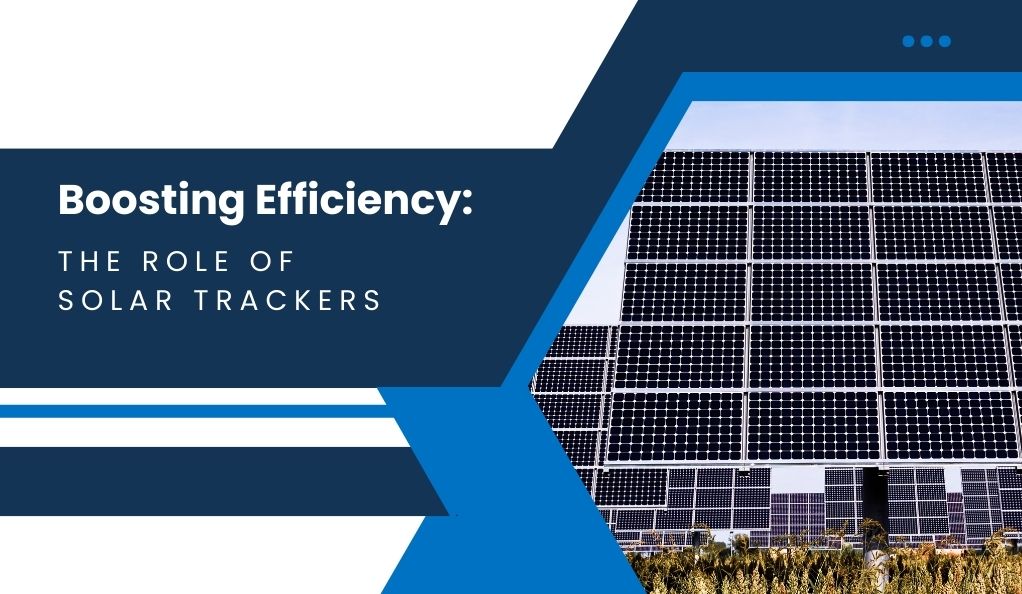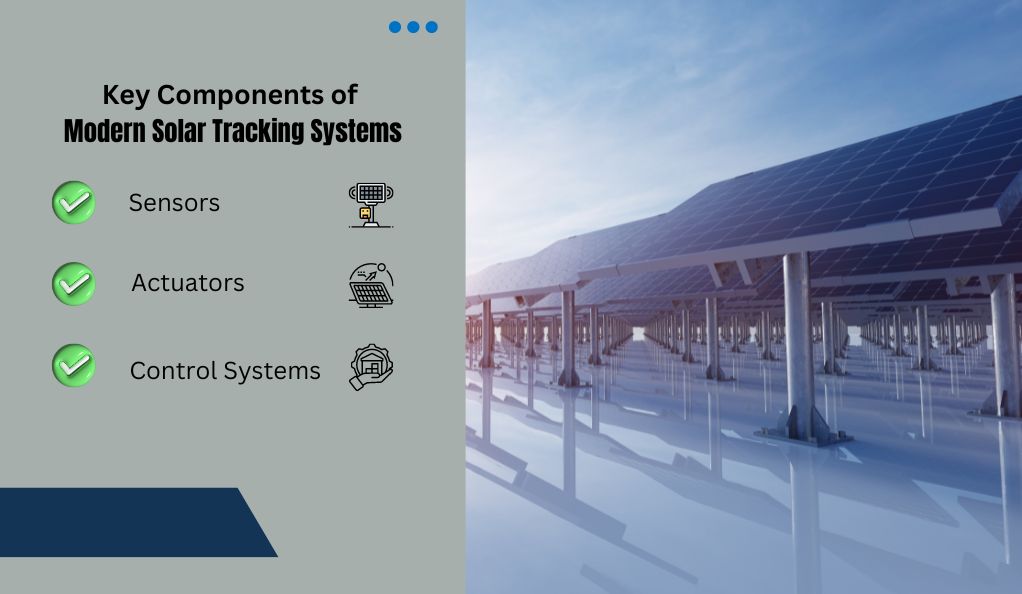The realm of solar energy has witnessed a remarkable transformation, partly due to the advent and evolution of solar tracker systems. These systems represent a significant technological leap in harnessing solar power, offering a dynamic alternative to traditional static solar panel installations.
What are Solar Tracker Systems?
Solar tracker systems are sophisticated mechanisms designed to move solar panels so that they remain aligned with the sun’s position throughout the day. This alignment ensures that the panels can capture the maximum amount of solar energy, as the angle of sunlight incidence continually changes from sunrise to sunset.
Importance in Solar Energy
The significance of solar trackers in the solar energy landscape cannot be overstated. While traditional static solar panels are fixed in one position, they only capture optimal sunlight during specific times of the day. In contrast, solar trackers adjust the orientation of solar panels, thereby maximizing exposure to sunlight and significantly increasing energy output.
Enhanced Energy Production
Studies have shown that solar tracker systems can enhance energy production significantly compared to fixed systems. For instance, a dual-axis tracker, which adjusts both in azimuth and elevation, can increase energy output by up to 40% more than a stationary panel. This efficiency boost is crucial, especially in regions with high solar potential but limited space for solar installations.
Reducing Carbon Footprint
By maximizing the efficiency of solar panels, solar tracker systems play a vital role in reducing the carbon footprint of solar energy production. The increased energy yield per panel means fewer panels are required to produce the same amount of energy, thereby reducing the resources and space needed for solar farms.
Economic Viability
With the advancements in technology, solar trackers have become more economically viable. While the initial installation cost is higher than static systems, the increased energy output leads to a quicker return on investment. Moreover, as the technology becomes more widespread, the cost of solar trackers is expected to decrease, making them accessible to a broader range of solar projects.
The Mechanics Behind Solar Trackers
Solar tracker systems are engineered marvels designed to optimize the energy output of solar panels by aligning them with the sun’s trajectory. Understanding their mechanics is key to appreciating their efficiency and technological sophistication.
How Solar Trackers Work
Solar trackers function on a simple yet effective principle: follow the sun. They adjust the orientation of solar panels through various means, ensuring that the panels face the sun at the optimal angle throughout the day. This movement can be in one or two dimensions, depending on the type of tracker.
Types of Solar Trackers
There are mainly two types of solar trackers:
- Single-Axis Trackers: These trackers rotate on one axis, moving back and forth in a single direction. They are typically aligned along a north-south path to follow the sun’s east to west movement. Single-axis trackers are simpler and less expensive than their dual-axis counterparts.
- Dual-Axis Trackers: These trackers offer two degrees of movement, allowing them to adjust both vertically and horizontally. This enables them to follow the sun’s path more accurately throughout the day and across seasons. Dual-axis trackers are more efficient but also more complex and costly.
Advancements in Accuracy and Precision of Solar Trackers
The effectiveness of solar tracker systems largely hinges on their accuracy and precision, which have seen substantial advancements in recent years. These improvements have been pivotal in optimizing the performance and efficiency of solar energy systems.
Technological Improvements in Tracking Accuracy
Modern solar trackers are equipped with sophisticated control algorithms and sensor technologies that significantly enhance their tracking accuracy. This precision is critical in ensuring that the solar panels are perfectly aligned with the sun’s position throughout the day, maximizing solar energy absorption.
Impact on Energy Output Efficiency
Improved tracking accuracy directly translates to higher energy output. Even a small misalignment can lead to considerable energy losses. For example, a deviation of just 1 degree from the optimal alignment can result in a loss of about 0.5% in energy output. Advanced solar trackers minimize such losses by maintaining precise alignment, thereby maximizing the efficiency of the solar panels.
Technological Components Enhancing Accuracy
- Advanced Sensors: Modern solar trackers employ various sensors, like light sensors and inclinometers, to detect the sun’s position accurately.
- Control Systems: Sophisticated control systems analyze sensor data and adjust the tracker’s position in real-time for optimal alignment.
- Machine Learning Algorithms: Some advanced systems use machine learning to predict sun positions and optimize panel angles, further improving energy output.
Boosting Efficiency: The Role of Solar Trackers

Solar trackers significantly enhance the efficiency of solar energy systems. This section delves into how they achieve this and compares their performance with fixed solar panel systems.
Comparative Analysis of Fixed and Tracking Systems
The fundamental difference between fixed and tracking solar systems lies in their ability to capture sunlight. A fixed system maintains a constant orientation, which limits its sun exposure to specific times of the day. In contrast, solar trackers adjust the panel’s position to follow the sun’s path, maximizing exposure and, consequently, energy absorption.
Efficiency Gains from Solar Trackers
The efficiency gains from using solar trackers can be quantified by comparing the energy output of tracking versus fixed systems. For instance:
- Single-Axis Tracking: Increases energy output by approximately 25-35% over fixed systems.
- Dual-Axis Tracking: Can boost energy output by up to 40% or more compared to fixed systems.
Factors Influencing Efficiency
Several factors influence the efficiency of solar trackers:
- Sun Path: The tracker’s ability to accurately follow the sun’s trajectory.
- System Design: Includes the mechanical design and the control system’s efficiency.
- Environmental Conditions: Local weather, geographic location, and seasonal variations.
Integration with Renewable Energy Systems
Solar tracker systems have evolved to not only enhance the efficiency of solar panels but also to integrate seamlessly with other renewable energy systems. This synergy is particularly important as the world moves towards a more diversified and sustainable energy mix.
Smart Tracking Systems
Advancements in solar tracking technology have led to the development of ‘smart’ tracking systems. These systems incorporate:
- Sensors and Microprocessors: These components analyze various factors like weather conditions and shade levels, adjusting the panel angles for optimal sunlight exposure.
- Machine Learning Algorithms: These algorithms predict weather patterns and forecast energy consumption, enhancing the precision of panel positioning.
Benefits of Integration
The integration of solar trackers with other renewable energy systems offers several benefits:
- Increased Overall Energy Output: By optimizing solar panel angles, trackers can contribute significantly to a hybrid renewable energy system, comprising wind turbines, hydropower, and other sources.
- Efficient Energy Management: Smart tracking systems can assess the energy output from different sources and adjust accordingly, ensuring optimal utilization of each energy source.
Key Components of Modern Solar Tracking Systems

The efficiency and effectiveness of solar tracker systems are largely attributed to their key components. These components work in unison to ensure accurate tracking and optimal energy output.
1. Sensors: Sensors are the eyes of the solar tracking system. They include:
- Light Sensors: Detect sunlight intensity and angle.
- Temperature Sensors: Monitor panel and environmental temperature.
- Inclinometers: Measure panel tilt relative to the ground.
- Gyroscopes: Provide orientation and angular velocity data.
2. Actuators: Actuators are the muscles of the system, responsible for the physical movement of the panels. Types include:
- Linear Actuators: Convert rotational motion into linear motion.
- Rotary Actuators: Use a rotating shaft for panel movement.
- Hydraulic Actuators: Utilize hydraulic pressure for heavy-duty applications.
- Electric Actuators: Employ electric motors for movement, popular for their energy efficiency.
3. Control Systems: The brain of the operation, control systems process data from sensors and command the actuators. They are crucial for real-time adjustments and precise alignment of the panels.
Challenges and Future Prospects of Solar Tracker Systems
As solar tracker systems become more prevalent in the renewable energy sector, they face certain challenges and also present exciting future prospects.
Current Challenges
- Maintenance and Durability: The moving parts in solar trackers require regular maintenance. Exposure to environmental factors like wind and rain can affect their longevity.
- Cost Considerations: The initial installation cost of solar trackers is higher than fixed systems. This factor can influence their adoption, especially in smaller or budget-constrained projects.
- Technical Complexity: Designing and implementing solar tracking systems involves complex engineering, demanding expertise in both mechanical and electronic systems.
Prospects on the Horizon
- Technological Advancements: Continuous research and development are leading to more robust, efficient, and cost-effective solar trackers. Innovations in materials and control algorithms are expected to reduce costs and improve durability.
- Increased Adoption in Hybrid Systems: Solar trackers are likely to see increased integration with other renewable energy sources, creating more efficient hybrid systems.
- Smart and Autonomous Systems: The integration of AI and IoT technologies promises the development of smarter, self-regulating solar tracking systems that can adapt to environmental changes and optimize energy output autonomously.
Conclusion
Solar tracker systems represent a significant advancement in the renewable energy sector. Their innovative design and functionality enhance the efficiency of solar panels, maximizing energy output. Despite challenges like maintenance needs, technical complexity, and higher initial costs, ongoing technological improvements and integration with other renewable sources promise a brighter, more sustainable future. As solar trackers continue to evolve, they stand poised to play a pivotal role in the global transition to clean energy.
